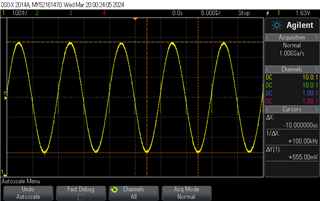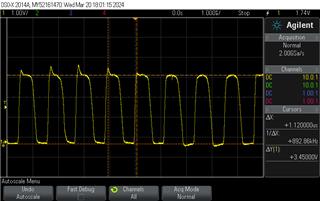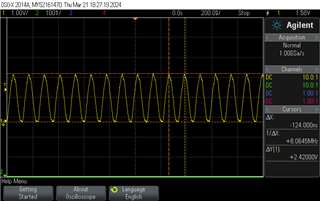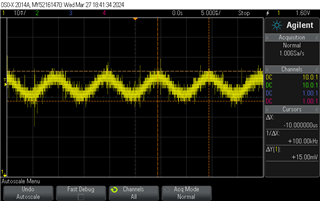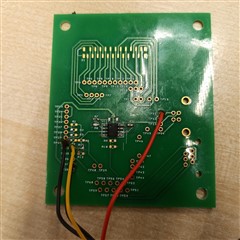Other Parts Discussed in Thread: THS4032
Hi There,
I am trying to amplify a sine wave signal of order of 40mv peak to peak. The signal oscillates from 1.57V to 1.61V so its not at absolute zero potential when going down. The gain is set to 46 as per circuit. The circuit used to work with LT6231IS8#PBF but upon changing to LMP7718MAE/NOPB the output is not as expected. It should be a 600mV peak to peak signal instead I am getting triangle wave of 6 MHz.
Please see attached circuit snap for your kind reference. I feel that Gain is set beyond the IC limit, please let me know.
Thanks..!!!
